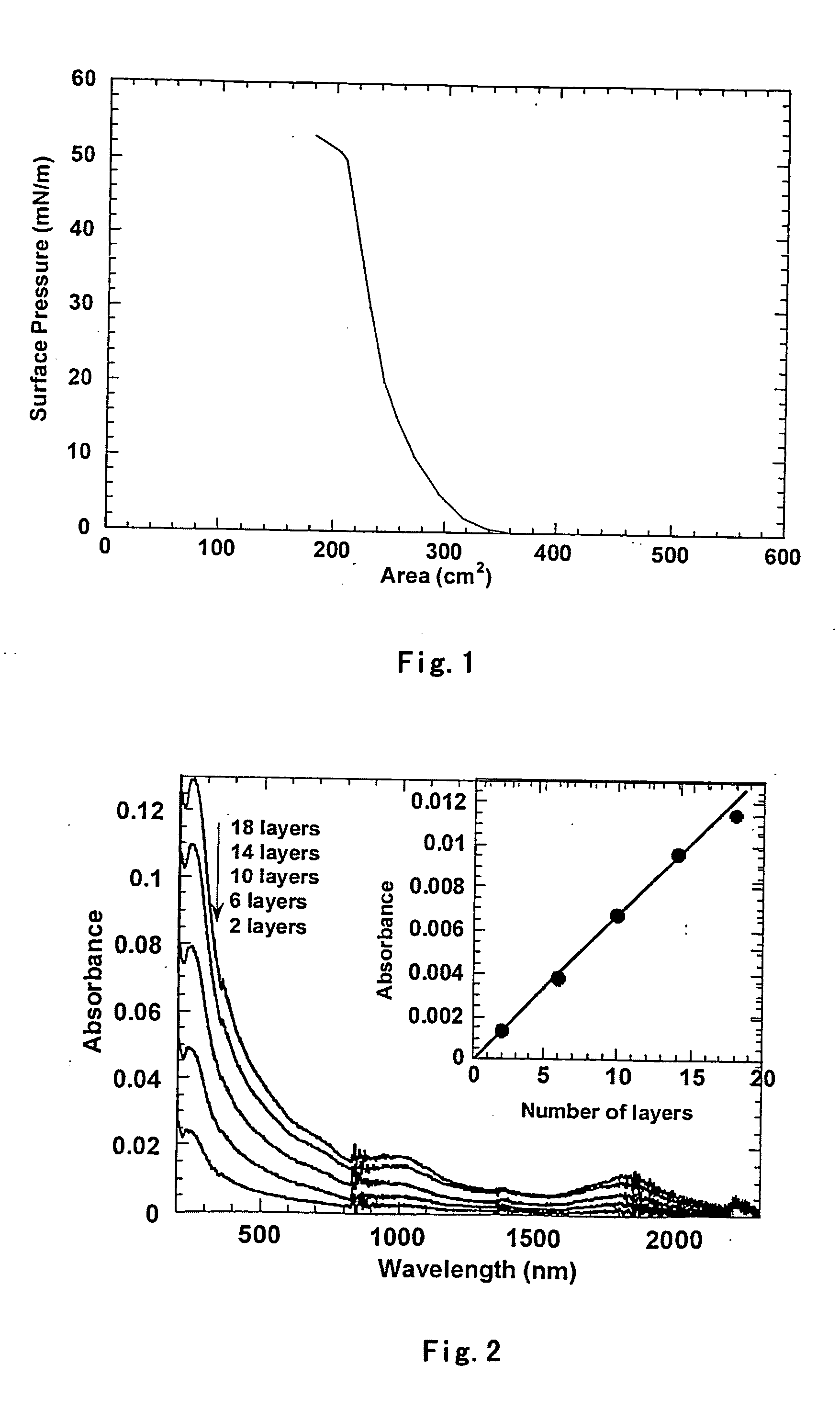Control method of arranging carbon nanotubes selectively orientationally on the surface of a substrate
- Summary
- Abstract
- Description
- Claims
- Application Information
AI Technical Summary
Benefits of technology
Problems solved by technology
Method used
Image
Examples
Embodiment Construction
[0020] As shown in FIG. 1 and 2, the invention combined with figures will be described further as follows. A solid substrate is submerged into 50° C. concentrated nitric acid or further is treated by silanization. The carbon nanotubes are purified and cut off by normal concentrated acid, heating, ultrasonic, and filtration et al. Long carbon nanotubes will be cut short firstly at the point of defects, then sulfated (nitridized) to form carboxylic groups at both ends and sides of the carbon nanotubes, thirdly acyl-chlorinated and acyl-aminated to attach organic macromoleculars, finally dissolved into chloroform solvent.
[0021] After above steps, 400 μl chloroform solution with a concentration of 0.1-0.5 mg / ml of carbon nanotubes is spread uniformly on water surface in sub-phase to measure π-A isotherms after chloroform is volatile out. As shown in figure, there is steep rise in surface pressure and high negative pressures (20-50 mN / m ), and the shape of the isotherm doesn't significa...
PUM
| Property | Measurement | Unit |
|---|---|---|
| Temperature | aaaaa | aaaaa |
| Surface energy | aaaaa | aaaaa |
| Isotherm | aaaaa | aaaaa |
Abstract
Description
Claims
Application Information
 Login to View More
Login to View More - R&D
- Intellectual Property
- Life Sciences
- Materials
- Tech Scout
- Unparalleled Data Quality
- Higher Quality Content
- 60% Fewer Hallucinations
Browse by: Latest US Patents, China's latest patents, Technical Efficacy Thesaurus, Application Domain, Technology Topic, Popular Technical Reports.
© 2025 PatSnap. All rights reserved.Legal|Privacy policy|Modern Slavery Act Transparency Statement|Sitemap|About US| Contact US: help@patsnap.com

